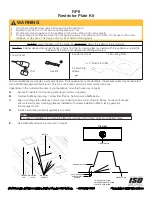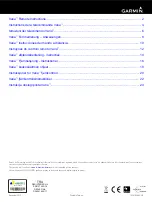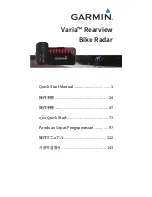
SONANCE
|
PROFESSIONAL SERIES
PENDANT
|
INSTALLATION MANUAL
4
WIRE GAUGE – 70V/100V SYSTEM
The most common wire used on commercial 70 volt systems is
18 gauge, 2 conductor, stranded, and jacketed without a shield.
The wire starts at the amplifier location and is paralleled at each
speaker location.
Wire length using 18 gauge is appropriate up to 700 feet with a
100 watt load. If you double the load (sum of your tap settings),
you will reduce the footage by half, to 350 feet. Conversely, if you
halve the load, you may double the acceptable wire length, i.e.,
a 50 watt load is safe over 1400 feet of 18 gauge. Stepping up to
16 gauge wire extends the allowable run length by approximately
35%. For example, a 100 watt load can go 700 feet on 18 gauge;
the same load may be placed on 1100 feet of 16 gauge.
WIRE GAUGE – 8 OHM SYSTEM
When using Sonance Professional Series loudspeakers in an 8
ohm system the total wire resistance should be less than 10%
of the speaker impedance. The speakers are nominally 8 ohms
impedance, so your total wire resistance should be no more than
0.8 ohms.
In simple terms, the extra resistance from the wire will have a very
negative affect on the sound quality of the speaker. The sound can
be less dynamic, definition of bass frequencies can be reduced,
and in extreme cases, the high frequencies can be attenuated.
Amplifier power is also wasted in the wire, reducing the maximum
output level of the system.
Please refer to the following chart
(see figure 1)
when deciding on
the appropriate wire gauge for your installation.
Wire Resistance in Ohms vs. Length of Cable Run
20 Gauge
50’
100’ 150’ 200’ 250’ 300’
.86
1.73 2.59 3.45 4.32 5.18
.65
1.30 1.94 2.59 3.24 3.89
.43
.85
1.28 1.71 2.14 2.56
.27
.54
.81
1.08 1.35 1.62
.17
.34
.51
.68
.85
1.02
Distance in Feet
18 Gauge
16 Gauge
14 Gauge
12 Gauge
AMPLIFIER SELECTION
When choosing an amplifier the maximum number of speakers
and the output level of each speaker must be known. The sum of
the tap settings should never exceed 80% of the amplifier’s rated
output. For example, if there are 5 speakers and the taps are set
at 15 watts, the load would be 75 watts (5 x 15 watts = 75 watts).
To arrive at the needed power for this number of speakers, simply
divide the total load by .8. In this case, 75 / .8 = 93.75 watts.
Therefore, a standard 100 watt amp would safely drive this load.
To calculate the amount of usable power an amp offers, simply
multiply the rated output by .8, i.e., 100 watts x .8= 80 watts.
SPEAKER PLACEMENT
Sonance Professional series speakers possess extremely smooth and
predictable off-axis frequency response. The chart below
(see figure
2)
shows how far apart the speakers can be placed in a distributed
audio system. The calculations are based on +/- 45 degrees of cov-
erage from the speaker, and listener ear heights of 62” for standing
and 40” for seated.
SPEAKER
SPACING
COVERAGE
AREA
COVERAGE
AREA
Speaker Spacing in Feet for a Distributed Audio System
8’ Hanging Height
5.7’ (1.7m) Apart
9.7’ (3.0m) Apart
13.7’ (4.2m) Apart
17.7’ (5.4m) Apart
9.5’ (2.9m) Apart
13.5’ (4.1m) Apart
17.5’ (5.3m) Apart
21.5’ (6.6m) Apart
Standing Listener Seated Listener
10’ Hanging Height
12’ Hanging Height
14’ Hanging Height
FIGURE 1: WIRE RESISTANCE
FIGURE 2: SPEAKER SPACING
































